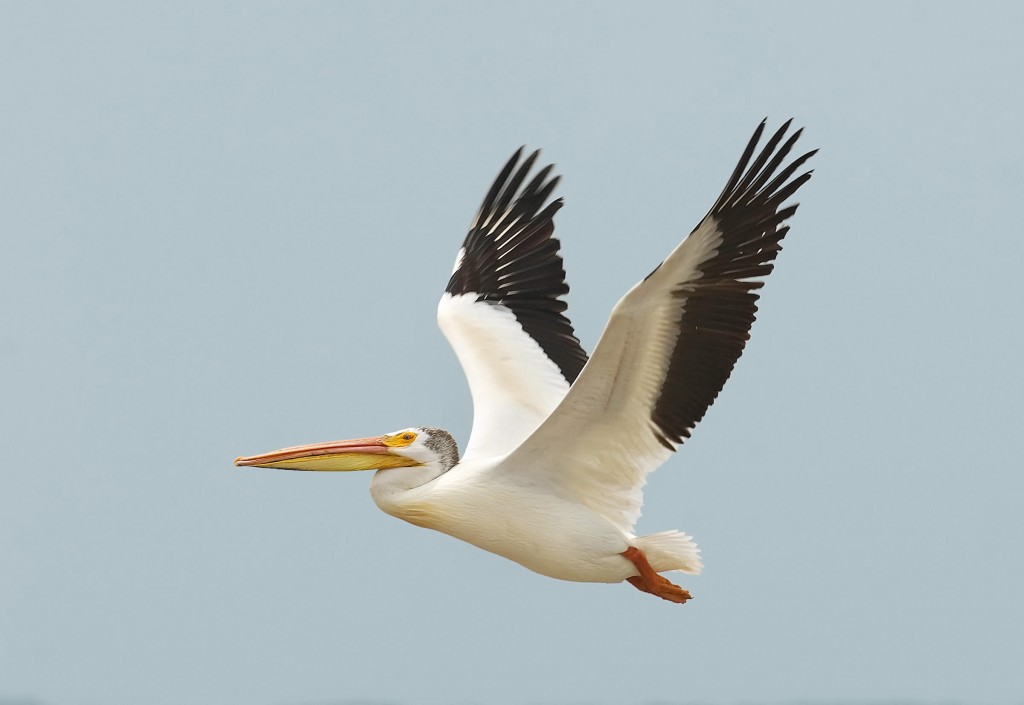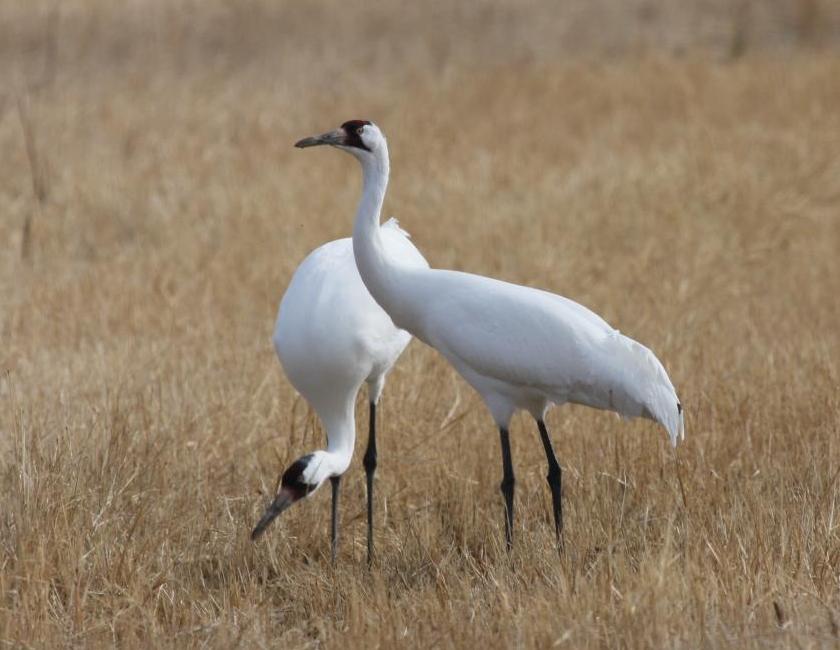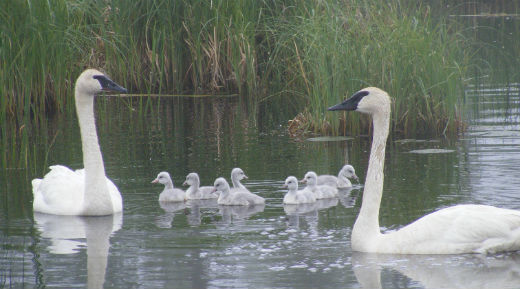The Great Whites
By Sarah Sortum, Switzer Ranch and Nature Reserve / Calamus Outfitters
You know the metaphors: a sea of grass, waves of wind, an ocean of prairie. These analogies continue to be used in a somewhat feeble attempt to describe the vast immensity of the prairie landscape. Well, I’d like to add another image; home of the Great Whites. These Greats won’t be found in the depths of the salty blue ocean. Instead, they can be found soaring across the big blue sky of the Great Plains.
Prodigious pelicans, whopping whoopers, and tremendous trumpeters all utilize the diverse habitats found in the Great Plains. This trifecta of boastful birds has three central traits in common; they are seriously big, they sport alabaster plumage, and they’re beautiful!
White Pelicans
Soaring in with a 9-foot wingspan, the American White Pelican secures its spot as one of the largest birds in North America. While many refer to this leviathan as having a pre-historic aura, they always remind me of a B-52 Bomber (NOT for the reason you may think). Seemingly awkward on the ground, when these behemoths set to the air, their immense wing span enables them to soar with unequalled grace and beauty. Cooperative in nature, they are often seen in groups, including using teamwork to herd fish. During migration, large numbers of pelicans can be seen at several lakes throughout the Central Flyway, which blankets the Great Plains. If you want to dive deeper into the pelican pastime or party with pelican perusers (sorry, couldn’t resist) be sure to check out the Harlan White Pelican Watch and Homecoming Celebration during the spring months.
Whooping Cranes
Standing proud, the tallest flying bird in North America is the Whooping Crane (they can look you in the eye at around 5-feet tall). One of only two crane species on our great continent, the Whoopers exemplify the striking elegance of cranes worldwide. Once nearly extinct, many individuals, agencies, and NGO’s have collaborated to ensure that Whooping Cranes will continue to grace our skies with their remarkable presence. To learn more about Whooping Cranes check in with one of the Sandhill Crane viewing stations during the spring and fall migrations. Also be sure to brush up on your Sandhills Crane watching etiquette to aid in the continued health and survival of North America’s treasured crane species.
Trumpeter Swans
Our final Great White is not only the largest waterfowl in North America, it is also the heaviest (they can weigh more than 25 pounds to accompany their 7-foot wingspan and need a 100-yard runway for takeoff). These pearly beauties may look like they belong in a tended garden manor, but don’t let their swan mystique fool you. They are monstrous in size and demand respect from man and beast (and fellow birds). Catching a glimpse of this altitudinous species is a lofty goal but the result will leave you feeling sky high! Listen for their trademark low bugle call on pristine wetland habitats. Another great conservation comeback story, Trumpeters were reintroduced to the Northern Great Plains in 1960 at Lacreek National Wildlife Refuge which lies just north of the Nebraska Sandhills. Lacreek NWR continues to serve as critical habitat for Trumpeters along with the many natural lakes and ponds of the Sandhills. Peek time for seeing swans at Lacreek NWR is during the winter months so pack up your parka and let the frosty air invigorate your senses.
I hope you get out there and search for these Great Whites of the inland sea (of grass that is). They are just a few of the species that make birding the Great Plains so unforgettable and you don’t have to worry about getting seasick to enjoy them!



